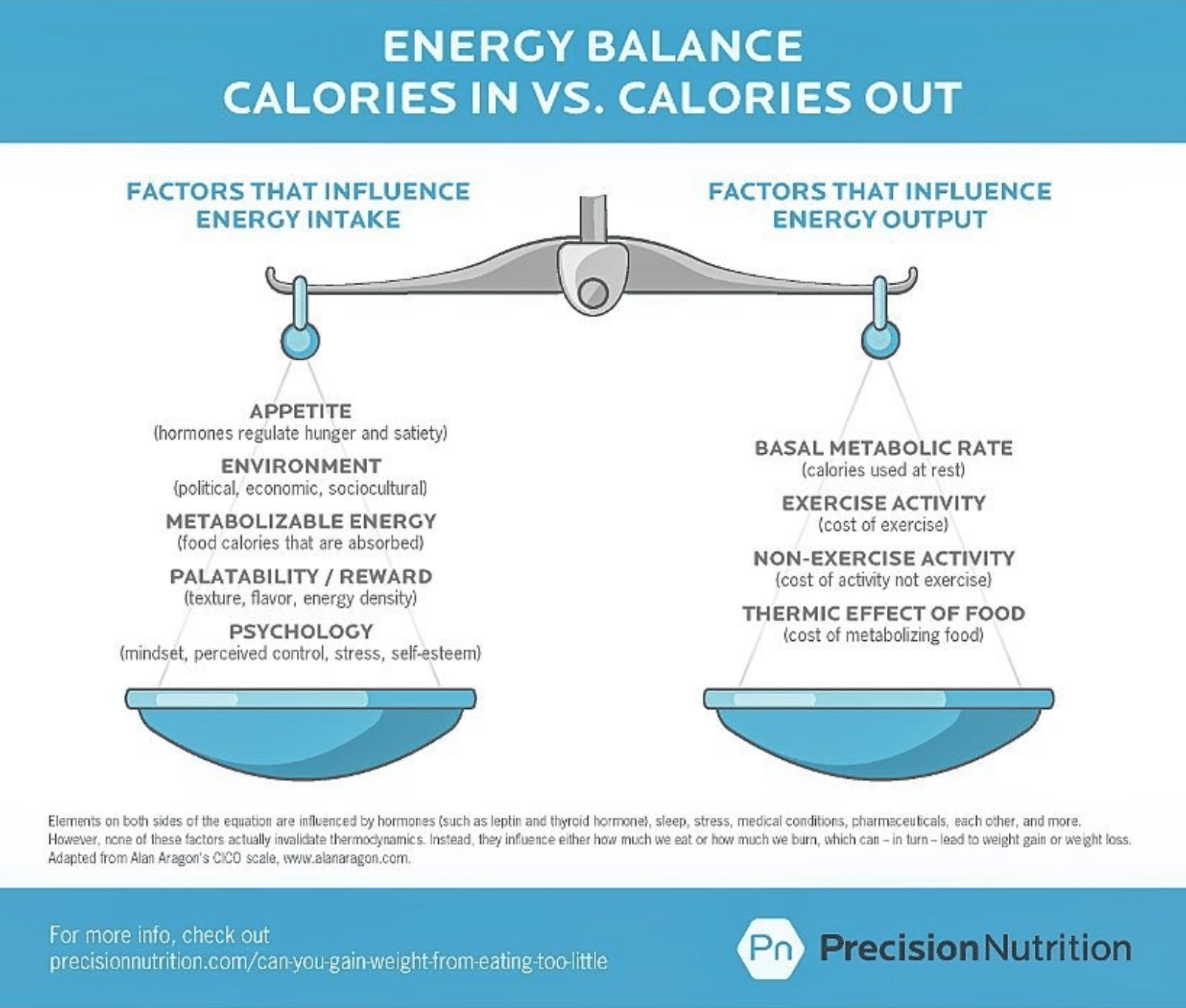One thing I have noticed from many years of coaching working with a variety of different people is ‘dieting’ is a short term solution to a long term problem. What can be defined as a diet you ask? thats a great question. Its my belief dieting is any kind of eating plan you can not maintain as a long term solution.
I have seen some people thrive long term eating a low carb diet and lose weight. They have found this way of eating enjoyable, easy to maintain while it still includes a large variety of meat, vegetables, nuts, seeds, and fruits. I have also seen people who enjoy eating a high carb diet, paleo, Mediterranean and the list goes on and they have all been successful losing weight.
So you might be asking then what is the key Chris? CICO..
Calories In Versus Calories out ultimately decides whether you are successful losing weight.
Calories in can be understood quiet simply as EVERYTHING that goes in your mouth. A calories currency is ATP (explaining ATP is a story for another day), energy that is broken down through a chain of chemical reaction provides the body with energy which brings us to calories out.
Calories Out is a little more complicated and known as Total Daily energy expenditure (TDEE). Its dictated by a few more moving parts like;
-Basal Metabolic Rate (BMR): A large component of the calories out equation is BMR (roughly 60%). BMR can be best understood as energy required to keep you alive. Internal functions like your heart pumping, brain function, digestion, and breathing all cost energy which your body gets from food consumed and stored energy on the body (fat).
Our BMR is an ever changing number determined by our overall health and wellbeing, if your sex hormones are out of balance and not thriving it will slow your metabolic rate, same goes if your body is experiencing digestive issues and not extracting nutrients efficiently from your food.
Non-Exercise Activity Thermogenesis (NEAT): This component of energy expenditure is the energy required for all body movements that are not exercise. Movement like moving your arms and legs as you hang out the washing, fidgeting at your desk, walking to the letter box, and getting in and out of the car. The list is endless and this all costs energy.
-Exercise Activity (EA): This is the obvious one which we all think about, EXERCISE. The amount of energy required for exercise is largely dependant on the intensity and duration of the exercise.
-Thermogenic Effect of Food (TEF): Did you know it cost energy to extract the micro and macro nutrients from your food? well it does. Not all nutrients are broken down at the same rate with protein and fibre said to cost more calories for digestion (WINNING).
So above I have explained what calories in and calories out consists of, while we recommend you choose foods that nourish your body you can still lose weight while including a variety of different foods as long as you ultimately are in a calorie deficit.
Poor quality food is typically more energy dense and nutrient deficient meaning its easier to over eat, leaves you feeling hungry, and over time could be detrimental to your wellbeing.
3 Tips to Losing Without Dieting..
1. EAT IN A CALORIE DEFICIT – Find out what your maintenance calories are (this will be personal to your body) and reduce your intake by up to 20%. No more!!
2. EAT FOODS YOU LIKE – Seems simple but people don’t last on diets because they are so restrictive and remove all the food they like. You can include the foods you love but always revert back to Tip 1.
3. EAT FOODS HIGH IN FIBRE AND PROTEIN – Remember the thermogenic cost of protein and fibre, it cost more energy to break down. It also helps you maintain lean muscle tissue, great for digestion, amongst many other things. Eat more protein and fibre..





